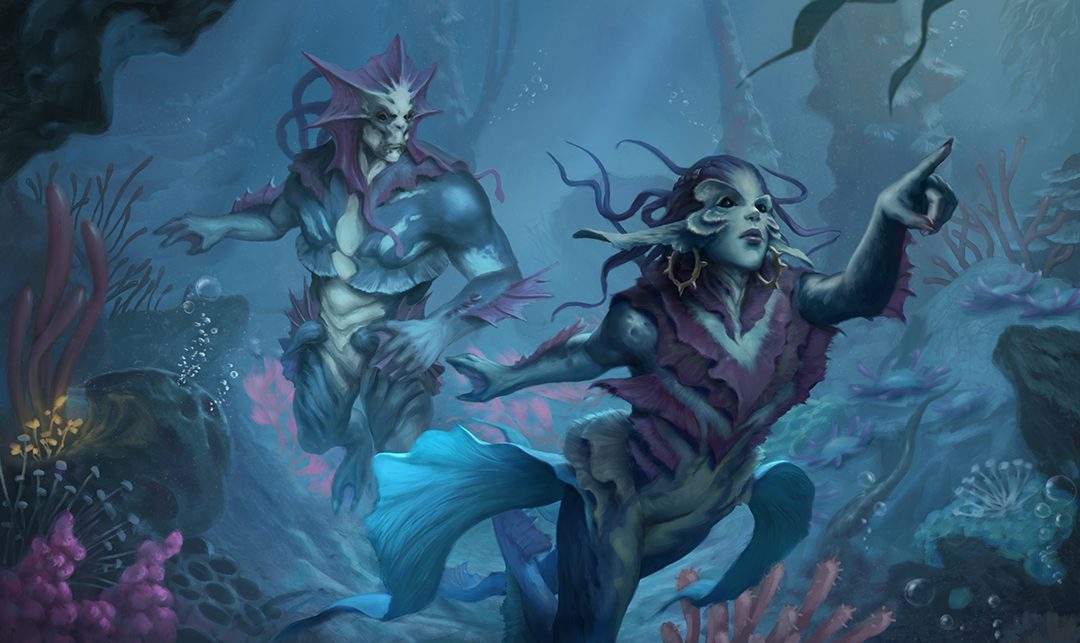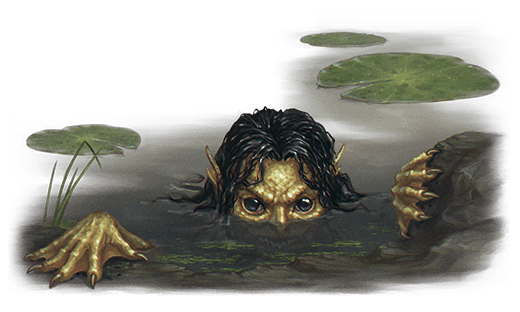
Picture this: it’s New York, 1842. You’re lining up to see the latest fad from America’s greatest showman, P. T. Barnum. You watch as he takes pride of place at the front of Barnum’s American museum. Despite his lack of likeness to Hugh Jackman (whoever that is), you eagerly listen as he tells you to step right up to gaze at the latest maritime marvel who’s pervaded the minds of sailors and sea dogs alike: the mermaid.
You see, Barnum has managed to catch one of the slimy suckers, drying its corpse and preserving it for posterity. So here you are, waiting with bated breath to catch a glimpse of the babe in a seashell bikini. Finally, the line parts and you see it.

P. T. Barnum’s Mermaid (1842)
But here be no long tresses. No seashell bikini. Not even the obligatory comb made of fish ribs. Before you, lies a contorted monstrosity. Behold, the Feejee Mermaid:
Of course, we now know that Barnum’s mermaid was hardly a mermaid at all; rather, the figure was made from the torso of a juvenile monkey and a rather unfortunate carp. Still, the creature scratched the heads of many a naturalist, rattling the public’s perceptions of mermaids. Perhaps the poets had been wrong? There was no golden hair spread on silver waves, as Shakespeare foretold, nor a starry sea-bud crown much to Tennyson’s dismay – just a rather curious arts and crafts project.tie
So, What do Merfolk Look Like?
The truth is, mermaids don many visages. The Scandinavian nøkk is a shapeshifting stallion who drowns passers-by when they’re a little too close for comfort. The Japanese ningyo is described as fish with a human face who incites calamitous storms. In Scottish folklore, selkies can turn into humans by shedding their seal skin. In Slavic countries, the Rusalka were seen as the personification of fertility due to their connection with water; it wasn’t until the nineteenth century that they became associated with animated corpses of victims who had drowned.

Artist: Suzanne Helmigh
In France, the twin tailed Melusine agrees to marry her suitor on one proviso: the right to bathe in peace. Of course, her request goes unheeded, leading to the discovery of her serpentine or fish torso by her ogling husband. These days, you too can sneak a peak of Melusine who holds pride of place on Starbucks Styrofoam.
This goes to show that Merfolk are indeed difficult to spot. They come in all shapes and sizes: their appearance and representation is as fluid as the water in which they swim. So why not flip the script?
The naked beauty languishing on a rock might make good poetry for landlubbers, but surely she’s had her time in the sun. Besides, players will see her coming from a mile away. Take it from me, when our party was meandering through the woods and spotted a naked woman wringing her extraordinarily long hair in a nearby lake, we knew taking a swim with her would surely be our last. My tiefling warlock would have been half as suspicious if the creature took the form of a horse, or better yet, a boy.
That’s the thing about mermaids: their gender tends to speak for itself. The image of a woman wringing her wet hair by a lake can be predictable. She’s evil. She mesmerizes. A boy wringing his shirt by a seashore offers nuance. How did he get there? What will he do? Does he need our help? By playing with conventions, GMs dodge the trope of the femme fatale and generate intrigue and mystery instead of predictability.
That being said, it’s still possible to surprise players by conforming to Botticellian beauty standards. For example, our GM offered a similar image of a water-bound beauty to our party quite some time later. In the middle of the woods, we saw a puckish woman bathing by a lake. Her long blonde hair censored her body just enough to warrant a PG rating. Suspecting the worse, our human barbarian rolled for initiative. He ran up to the bronzed beauty, drew back his fist, and punched her square on the nose with a mighty thwack.
And then, “Ow!”
Tears welled in the woman’s eyes as she crippled over in pain. She drew her hands to a nose in a manner that put Marcia Brady’s performance to shame. We were mortified. Surely, she was evil! She was wringing her excessively long hair in a lake! She was incredibly naked whilst doing so! But in playing into the trope of the seductive siren, our GM expertly dodged our expectations of the character’s intent, gleefully casting our party as brazen thugs in the process.
Giving Ariel a Makeover
After watching Ariel gaze adoringly at a dinglehopper, you’d be forgiven for thinking that mermaids are rather innocuous creatures. Disney’s pelagic princess went some way to render mermaids sickly sweet, but the truth is, the mythology of mermaids is steeped in tragedy.
Take Hans Christian Andersen’s The Little Mermaid as a prime example – a story unrecognizable from its animated variant. In Andersen’s tale, a nameless mermaid seeks the assistance of a sea witch to obtain an immortal soul which only humans can possess. The witch informs her that she can obtain a soul if she acquires the love of a prince. In exchange for the little mermaid’s tongue as payment, the witch is happy to concoct a potion which will give the mermaid human legs. But there’s a catch. Every time she walks on land will feel as if she’s stepping on sharp knives.
While the mermaid is up for the challenge, her efforts to gain the prince’s affections prove futile as he has fallen in love with another woman. The witch had warned her that on the dawn following the newlywed’s marriage ceremony, the mermaid will turn into seafoam.
In an effort to stop the mermaid’s untimely demise (after all, she is only sixteen), her sisters gift her a dagger which they brought from the witch in exchange for their hair. If she kills the prince with the dagger and allows his blood to soak her feet, she’ll transform back into a mermaid. However, our humble protagonist can’t bring herself to face such a task, so she casts herself into the ocean where she’s promptly turned into seafoam.
You’d think that would be the end of the mermaid’s miserable plight, but our story doesn’t stop there. Due to her selflessness, ethereal spirits grant the mermaid an opportunity to obtain a soul. She only needs to do good deeds for the next three hundred years – give or take. In the meanwhile, she’ll exist in a watery limbo. Not only that, but every tear shed from wicked children will add a day to her sentence as seafoam.
While this version is certainly a story that warrants a production from Quintin Tarantino, the commodification of mermaids provides tantalizing food for thought.
Through their exchanges with the sea witch, the body parts of merfolk are bought and sold. Their hair, fins, and tongues have market value. Which leads me to ask, how are mermaids viewed in your 5e setting? Are they sentient beings, worthy of love? Or are they merely the other white meat of the sea?
Perhaps your underwater adventure begins with a shrewd fisherman whose placed a hefty price on a mermaid’s head? Or perhaps you’re telling the story of Captain Ahab, doing everything he can to catch his white whale of a mermaid for both splendor and revenge? Given that our cultural conceptions of mermaids are so securely fixed on their bodies, it’d be worthwhile to gauge their value in your world; monetarily or otherwise.
This gives rise to a variety of salvage options. Perhaps, when blended with the right ingredients, a mermaid’s gills could be used to brew a potion of water breathing? Perhaps a mermaid’s voice box could be ingested to grant a charisma bonus? More importantly, the corporeal mermaid need not be the only part of the mermaid that is salvageable; rather, her seashell tiara and enchanting harp can always be added to a player’s arsenal, providing fruitful options for those committed to roleplay. After all, the acquisition of a mermaid’s conch shell could be just the thing to explain the player’s sudden choice to multiclass as a bard.

Artist: Andreia Ugrai
A Portent of Evil
That being said, it’s worth remembering that in many mythologies, mermaids are portents: a fact that is often seared into their flesh. In the Japanese myth Yao Bikuni, a fisherman unwittingly captures a ningyo. He invites his friends over to feast upon the creature.
One of the guests notices the creature’s human face and privately cautions the others not to eat it. They discreetly place the meal in their pockets to discard later. However, one of the guests drinks a little too much saké that evening and carelessly gives the fish to his daughter who eats it gleefully.
The daughter experienced no immediate side effects, so the pair forgot about the ordeal for a time. However, when the child reached maturity, she ceased to age. Everyone around her grew old and died, but she remained unchanged. Eight hundred years later, the miserable Yao Bikuni ended her life.
While the story seems to dissuade readers from expired seafood, another lesson imparted is that enchanted fish should come with a warning label. A ningyo is no ordinary chicken of the sea; rather, even in death, their flesh bares the indelible stamp of their otherness. The flesh of a mermaid might be an equally disastrous diet in your 5e campaign, creating the perfect innocuous dish for unsuspecting enemies.
Otherwise, players could be placed in the shoes of the fisherman. Would players eat their catch of the day, even if it had a human face? What if the fish offered parties a wish, so long as they released it? The latter occurs in the Brothers Grimm’s “The Fisherman and his Wife”.
A fisherman releases a fish, so long as it grants him a wish. The fisherman wishes for better living quarters and the fish obliges, but this is not enough. He returns to the fish again and again, desiring splendor and riches which are promptly rewarded. Every time he does this, the fish wreaks havoc on the environment. The skies turn dark, and the sea turns into a turbulent whirlpool.
This is easily transferable in a 5e campaign. Perhaps, during the party’s attempts to hunt and forage for food, they stumble across a fish with the wish spell. As soon as the wish is granted, players soon become aware of the evil that has transpired in order to make their wish possible.
Wishing for greater health causes the death of a once-healthy King, which sparks a civil war. Wishing for grandeur is all well and good, but what of the family whose inheritance has been stolen overnight? While the inclusion of the wish spell is a hotly debated topic in most campaigns, it certainly would entice players to be careful of what they wish for.
I’ll Sing You a Song, the Song of the Sea!
Despite their feathers and lack of fins, sirens have been linked to mermaids due to their murderous melodies. Woe betides all who listen to the siren’s song. Odysseus had the right idea when he encouraged his crew to tie him to the mast of a ship while they stuffed wax in their ears. Failure to do so meant shipwreck.
Yet, in some versions, sirens were fated to die if someone heard their mesmerizing melodies and escaped their clutches. These tales uncover the myth of the temptress upon which the mermaid is based. The mermaid is not wholly an ill-omen. Rather, from her point of view, she must sing to survive. She doesn’t find joy in shipwrecks and calamity. Rather, she sings because as soon as she stops, she’s granted the same ill-fate as her fishy forebears.

Artist: Xabi Gazte
A singing mermaid is a fulcrum of cause and effect in a 5e campaign. Their inclusion brings forth exciting storytelling opportunities. Perhaps players were employed to dispatch a mermaid due to their pitchy vocals, which is affecting the local fishery? Perhaps you could persuade a mermaid to fight on your behalf in battle, with enemies rolling Wisdom saving throws against their songs to avoid swimming with the fishes? While they’re song might be as old as time, it doesn’t have to be a sore spot for parties. After all, if we’ve learned anything in this article, it’s the mutable nature of the mermaid.
Mermaids are difficult to dissect due to their innumerable representations. They can be both temptress and victim; both beautiful and hideous; both friend and foe. They take on innumerable forms and possess a variety of uncanny abilities. Whether they be ningyos, wish fish or sexy sirens, the world is truly your oyster when it comes to this maritime marvel.

![Grim Hollow: The Player's Guide [PDF]](https://b2358178.smushcdn.com/2358178/wp-content/uploads/2021/02/Grim-Hollow-players-Guide-PDF-600x600.jpg?lossy=1&strip=1&webp=1)


0 Comments